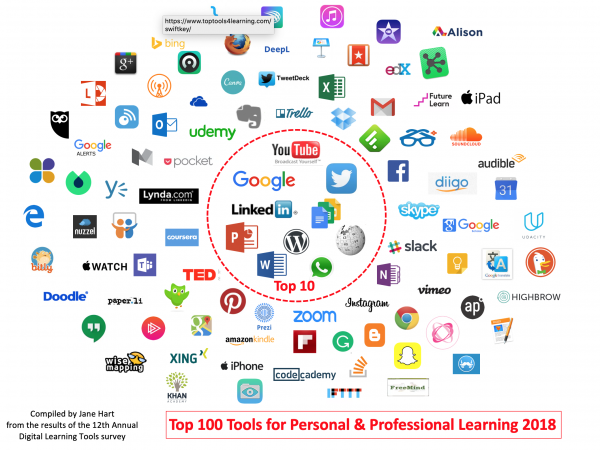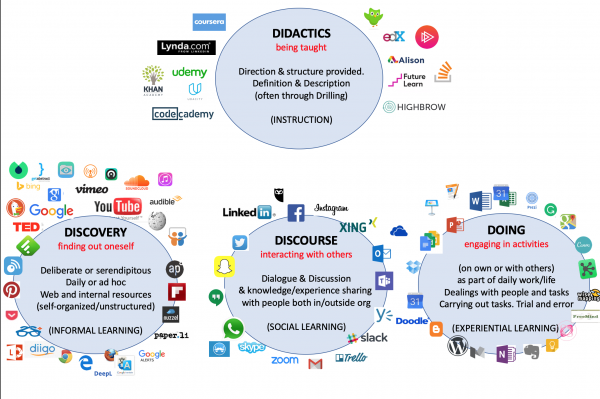When it comes to learning and development, the modern employee – particularly the modern professional – has very different ideas and ways of learning. This has become very apparent in the survey I have been running over the last 12 years into the top tools people use for learning. This study hasn’t just revealed the most popular tools for learning, but also some interesting features about how people learn.
The Top Tools for Learning survey has been running since 2007. The 2018 Top Tools for Learning 2018 list was published on 24 September 2018 together with 3 sub-lists to help identify the context of use for each of the tools.
- Top 100 Tools for Personal & Professional Learning 2018
- Top 100 Tools for Workplace Learning 2018
- Top 100 Tools for Education 2018
Here is an infographic of the Top 100 Tools for Personal & Professional Learning 2018.

This study has revealed some interesting features about how people learn. Here are 5 key facts.
ONE – Modern professionals learn in many different ways – for, at and through work, both inside and outside work, through the 4 D’s of Learning:
- DIDACTICS – i.e. being taught (aka INSTRUCTION), eg through
- online course platforms
- DISCOVERY – i.e. finding out for oneself (aka INFORMAL LEARNING), eg through
- web search
- making use of web resources like videos, podcasts, articles and blog posts
- use of curation tools
- DISCOURSE – i.e. interacting with others (aka SOCIAL LEARNING), eg through
- professional social networking (with external contacts)
- collaborating with internal colleagues on enterprise social platforms
- DOING – i.e. engaging in activities (aka EXPERIENTIAL LEARNING), eg through
- doing the day job
- manager feedback and guidance
Here’s how the Top 100 Tools for Personal and Professional Learning map onto these 4 areas.

TWO – Modern Professionals learn for many different reasons. Not just because they have to, but because they want to, e.g.
- to acquire a new body of knowledge or skills
- to solve a performance problem
- to improve the work they are currently doing
- to keep up to date with what’s happening in their industry or profession
- for their own career development.
- for inspiration, to innovate, or
- (for some) for the sheer joy of learning.
THREE: Modern Professionals learn continuously – i.e not just through some periodic training or education, but daily or very regularly in (mainly) informal ways.
FOUR: Modern Professionals organise and manage their own learning. They make their own decisions about how best to address their learning and performance needs in order to self-improve and self-develop. Autonomy and choice are key. Modern professionals are self-reliant and self-sufficient continuous learners. As a consequence of this ….
FIVE: For Modern Professionals learning is a personal experience. It is one selected by each individual dependent on their needs and preferences.
But which of the different ways of learning bring modern professionals the most value? See next page.
>> The most valued ways of learning for Modern Professionals